Container Plant Nutrition and Feeding
dale92539 Riverside Co SoCal
8 years ago
Featured Answer
Sort by:Oldest
Comments (40)
jane__ny
8 years agodale92539 Riverside Co SoCal
8 years agoRelated Discussions
Feeding Al's container mixes
Comments (7)The amount of nutrients in Miracle Gro potting soil and similar mixes is really negligible, no matter what it says on the package. It's probably enough to keep a foliage house plant growing indoors healthy for two or three months, but flowering plants and vegetables growing outdoors need supplemental feeding as soon as they put on growth. If you add a complete controlled release fertilizer like osmocote plus to either mix at the rate of one tablespoon per gallon of mix, your mix will have more nutrients than MG to start with. I do that and also fertilize with a soluble fertilizer once a week once the summer growing seazon is underway, as Josh said....See MoreSecond try - Containers - Organic Foliar Feeding? And/Or Worm
Comments (6)I thought this was an interesting study on growing tomato transplants with organic compounds and specifically using vermicompost. Some of it might be worth exploring in regular container growing. http://wormpower.net/pdf/Cornell_Organic%20_Transplant_Media_and_Tomato_Performance_2007.pdf The gist of it is plants grown solely with plant based nutrients did not do as well compared with those grown with mix amended with vermicompost AND blood meal. (though alfalfa produced acceptable transplant as well) Vermicompost alone and blood meal alone not effective --best results were with the 2 combined. Scroll down for brief synopsis of results and conclusions. Of course, you would have to be careful not to add too much of any air robbing component as Al points out. Fallofrain, I don't think you would be able to emulate the ideas in the book How to Grow World Record Tomatoes by Charles Wilber but for anyone interested in organic growing in- ground or in containers it is a very entertaining read. He has a set way of doing things and lays it out like a drill sargeant but you can't argue with his results as he held many Guiness World Records. He harvests 100 pounds of tomatoes (from one container/one plant) with his special compost. Available on Amazon.com for $10...See MoreFastest Edible, Nutritional Plants (Indoors or Out)
Comments (14)"Wildman" Steve Brill has alot of edible plant info on the linked website. He also has a book with more info. He markets with much humor, but I find his info is seriously correct. As you read about wild edibles you will find conflicting info. I trust Steve's. Try wild plants out before an emergency so you can carefully learn IDs and how you react to new foods. Tom Brown has survival books out, also, with good wild edible and survival suggestions. Two older ones are: Tom Brown's Field Guide to Wild Edible and Medicinal Plants, and Tom Brown's Guide to Nature and Survival for Children. Don't reject the second one just because it's for "children". I don't agree with some of his philosophy, but I trust his edible plants and medicinal plant expertise. Also be aware that in some emergencies (nuclear fallout, volcanic dust, etc.) outdoor foods might be more contaminated than indoor stored foods and seeds you might sprout indoors. Adjust your plants to match the "emergencies" for which you are preparing. Here is a link that might be useful: Foraging with Wildman...See MoreNeed help, feeding container plants
Comments (14)Sunburn, I'm here in Atlanta/Alpharetta too. We have plants in containers a little larger than a five gallon bucket. They've been watered only twice in the last six weeks. At this time of the year, I would only water once a week or not at all since we've been getting a lot of rain each week. And I've also put blue water (miracle grow) on them once. They're due for another dose because it has rained so much, but I still believe they are doing well due to the compost that's in there. Another thing, once it gets really hot, I let the plants themselves tell me if they need water. I never assume it. If the tips start to droop a little, I start to watch them. Believe me, that's much better than over-watering. It's something I learned from all of my other flowers and herbs that are in pots. It's sort of like what they say on watering your lawn, if you water ever day, it can develop shallow roots that you don't want. Water deep once a week and that takes care of things - until we reach the scorchers.. Another thing, that you may not encounter with such large containers, but every year the first couple of tomatoes usually have BER, then they're fine. It's almost like they are self-adjusting to their 'pot' environment. Beth...See Moredale92539 Riverside Co SoCal
8 years agolast modified: 8 years agodrew51 SE MI Z5b/6a
8 years agolast modified: 8 years agodale92539 Riverside Co SoCal
8 years agolast modified: 8 years agodale92539 Riverside Co SoCal
8 years agolast modified: 8 years agoewwmayo
8 years agodale92539 Riverside Co SoCal
8 years agolast modified: 8 years agodale92539 Riverside Co SoCal
8 years agolast modified: 8 years agojane__ny
8 years agoewwmayo
8 years agodale92539 Riverside Co SoCal
8 years agodale92539 Riverside Co SoCal
8 years agodale92539 Riverside Co SoCal
8 years agodale92539 Riverside Co SoCal
8 years agodale92539 Riverside Co SoCal
8 years agodale92539 Riverside Co SoCal
8 years agodale92539 Riverside Co SoCal
8 years agolast modified: 8 years agodale92539 Riverside Co SoCal
8 years agoewwmayo
8 years agolast modified: 8 years agodale92539 Riverside Co SoCal
8 years agoewwmayo
8 years agodale92539 Riverside Co SoCal
8 years agorooftopbklyn (zone 7a)
8 years agodale92539 Riverside Co SoCal
8 years agolast modified: 8 years agodale92539 Riverside Co SoCal
8 years agodale92539 Riverside Co SoCal
8 years agorooftopbklyn (zone 7a)
8 years agodale92539 Riverside Co SoCal
8 years agodale92539 Riverside Co SoCal
8 years agodale92539 Riverside Co SoCal
8 years agolast modified: 8 years agowisconsitom
8 years agodale92539 Riverside Co SoCal
8 years agodale92539 Riverside Co SoCal
8 years agolast modified: 8 years agodale92539 Riverside Co SoCal
8 years agolast modified: 8 years agoLarry (Los Angeles, 10a, Sunset Zone 19)
7 years ago
Related Stories

GARDENING FOR BIRDSFeed the Birds: 6 Plants for Abundant Winter Berries
Be kind to your fair feathered friends during lean food times by planting a shrub or tree loaded with nutritious snacks
Full Story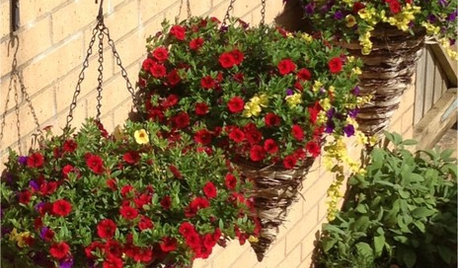
CURB APPEALCrazy for Colorful Cones: 5 Container Plantings Beyond the Bowl
Give even a small garden an exuberant vibe with hanging cones overflowing with blooming beauties
Full Story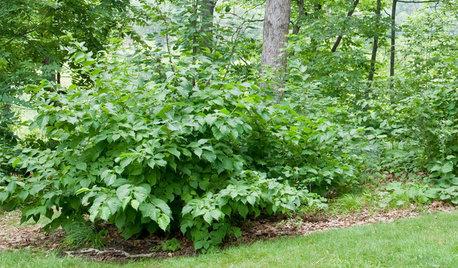
GARDENING GUIDESGreat Design Plant: Corylus Americana Awakens the Woodland Garden
Plant American hazelnut for three seasons of interest and to feed our furry and feathered friends
Full Story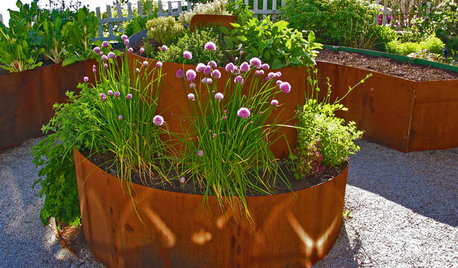
URBAN GARDENSContainers Make Growing Edibles a Cinch
If life hands you a lack of land, grow lemons — with a few basics, you can proudly reap the fruits, veggies and herbs of your labor
Full Story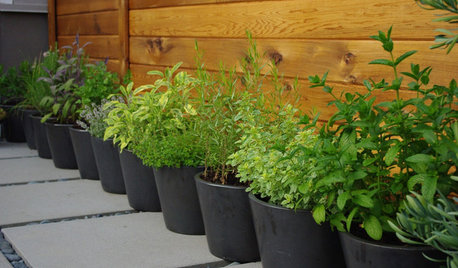
GARDENING GUIDES4 Herb Container Gardens for Fabulous Global Cuisine
Tingle your taste buds with the unbeatable taste of fresh herbs in your Italian, Asian, Mexican or French fare
Full Story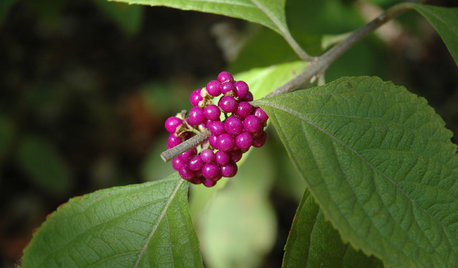
GARDENING GUIDESGreat Design Plant: Nourish Wildlife With American Beautyberry
The bright purple berries of Callicarpa americana feed winged beauties and make the Southeast U.S. native a fall garden standout
Full Story
GARDENING FOR BUTTERFLIESGreat Design Plant: Parry Manzanita Stands Out in Low-Water Gardens
Make a dramatic architectural statement and feed wildlife in woodlands and more with Arctostaphylos manzanita
Full Story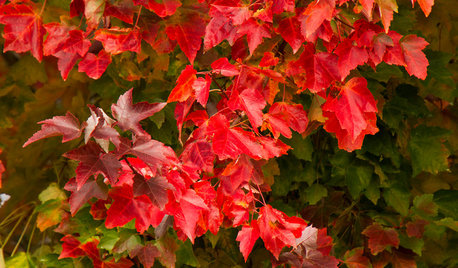
TREESGreat Design Plant: Acer Rubrum Brings Shade and Beauty
Red maple — a fast-growing, low-maintenance Eastern native — has spectacular fall foliage and early-spring flowers that feed pollinators
Full Story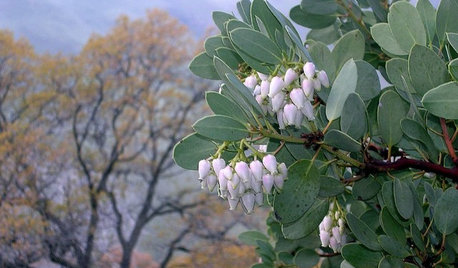
GARDENING FOR BUTTERFLIESGreat Design Plant: Arctostaphylos Glauca Nourishes and Delights
Make big berry manzanita a center-stage specimen and watch the evergreen feed wildlife through the seasons
Full Story
GARDENING GUIDES7 Fall Beauties for Mild-Climate Container Gardens
We're talking long-term relationship: These showy shrubs will bring color to your container garden autumn after autumn
Full Story



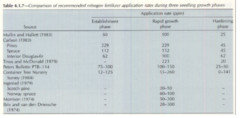
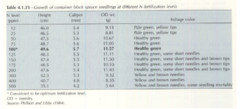

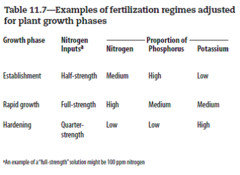



drew51 SE MI Z5b/6a